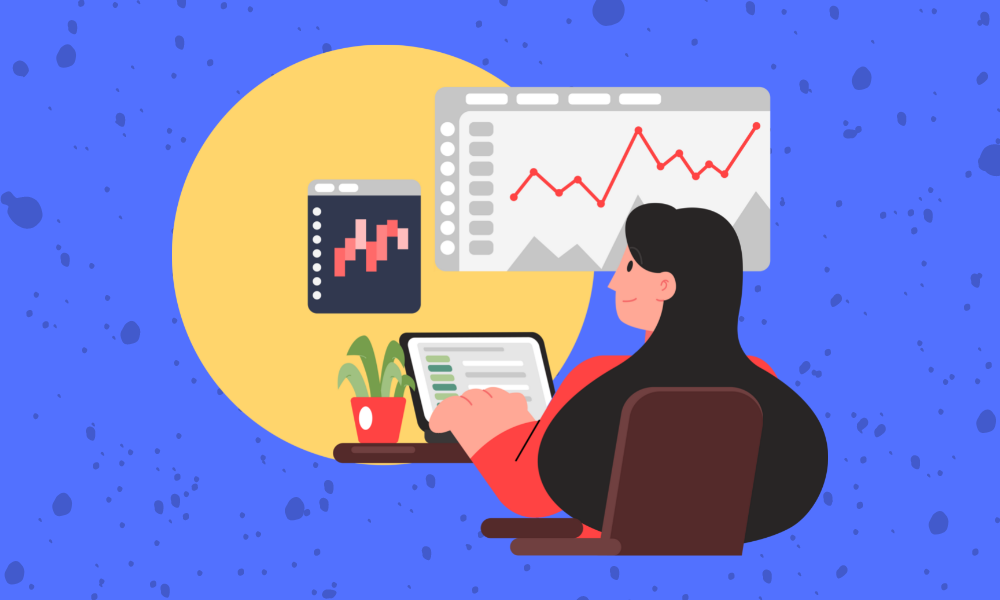What exactly is consistent trading? How to Improve Consistent Trading?
 Jason J Ash
Jason J Ash
Consistency is frequently used, and all traders are continually looking for it. However, less than 1% of all traders will ever make money in this industry, and achieving consistency is a major challenge.
What exactly is consistency trading?
When traders discuss consistency, they mean they desire to make consistent and consistent profits in their trading week after week, with few drawdowns and losses.
Of course, that is the purpose of a trader, and who doesn't want that? But consistency does not begin there...
Being consistently profitable means that, despite all of the unavoidable losses, you are gaining money on average over time as the number of transactions you take increases.
Why Is It Important?
- Finding that one trade that will transform your life forever is different from the goal of trading. You may have better odds at the casino if you wager the farm on any trade.
- Nope. Trading is about sticking to a well-defined strategy that generates profits over time, allowing you to compound your money. If you are successful, your account will expand enormously over time (if you reinvest the profits).
- Let's imagine you start with a respectable $10,000 investment. If your trading strategy averages a 25% annual return and you reinvest your winnings, you'll have a cool $1 million in 21 years. And $2 million by year 24, just three years later... That is the enchantment of compounding.
Here are some strategies for boosting your trading consistency:
1. bring a consistent presence in markets.
One of our more brilliant developing traders collaborates with me regularly to focus solely on this goal. Create a habit of consistent energy, processing capacity, focus, preparedness, anxiety, physical fitness, blood sugar levels, and weariness.
Markets are volatile. Information evolves. Data travels quickly into and out of markets that demand fast and correct judgments. If you bring to the markets is inconsistent, you are digesting the different facts. This combo exacerbates inconsistency. To limit volatility in your trading performance, bring a similar you to each trading session.
2. Build a Playbook
In my second book, The PlayBook, I detail a training activity to improve your trading that we use when training our traders. What are the specific trading variables that work best for you?
Archive those configurations and then study, study, study them. Trade them more frequently and for larger sums. This is your concern. When you know your business, then and only then can you operate it more consistently.
Our biggest trader today surpassed all his classmates in archiving PlayBook trades while he was a Junior Trader.
3. Increase your size consistently and methodically.
Sizing correctly is critical for consistent trading. Some grow too quickly, resulting in irregularity and even setbacks. In general, I advise traders to increase risk and size by 20% following each significant period of success.
One of our top two traders has become a seven-figure trader by doing little more than trading his edge consistently and with a process bigger than when he was a six-figure trader.
4. create a report card for your process.
Our most improved trader, who was already consistently profitable, saw benefits when he structured his trading day around completing a self-determined daily process.
The finest traders invest in themselves as much as they do in their trading. What are the things you need to do, and more importantly, what will you do every day to improve?
Grade your day based on how effectively you executed your process, designed to improve daily. As you focus on the process, you will experience less trading stress throughout the day.
5. Be open-minded and flexible
The thesis is fine (ex. NFLX will trade higher) and beneficial to many traders. However, be open to data that suggests your trade is incorrect. Be willing to let the markets reveal your amazing risk/reward setups.
Our top traders, who trade with size, work hard and deliberately to have an open mind during the trading session. The term "electronic trading" refers to the sale of electronic goods. Fighting price action relevant to your thesis might lead to inconsistency in trading.
6. Be bionic
Spend time every day fine-tuning and creating filters for your best setups. Allow technology to enable you to run more offense with your favorite plays. Over a three-month period, one of our top traders introduced custom filters, which produced an additional $50,000 in PnL.
Smartly designed technology can ensure that you get all your favorite arrangements, resulting in consistent results.
7. Adapt to different markets
Markets shift, and traders must adapt. I trade significantly differently than I did when I began in the late 90s. We train our traders differently today than we did when we founded SMB in 2005.
You must trade the setups that are rewarded in this trading time of record low volatility and a market that is constantly grinding higher. Pullback trades, for example, work really well in the current market and would have gotten crushed in 2008 and late 2007.
Recently, volatility in our markets has risen due to concerns about the French elections, the failure to enact a health-care package, North Korea, and Syria, all of which have a significant impact on our short-term trading.
Conclusion
Trading is easy; it's rather basic but requires sufficient determination to succeed. If done correctly, it can lead to financial independence. Besides conquering the psychological hurdles of greed and fear, it is necessary to retain self-confidence through ups and downs.
Leaving everything to chance and becoming overwhelmed by consistent losses are not marks of a competent trader. Finally, Mindset, Practice, Experience, and Knowledge will lead to trading consistency.
Subscribe to my newsletter
Read articles from Jason J Ash directly inside your inbox. Subscribe to the newsletter, and don't miss out.
Written by
